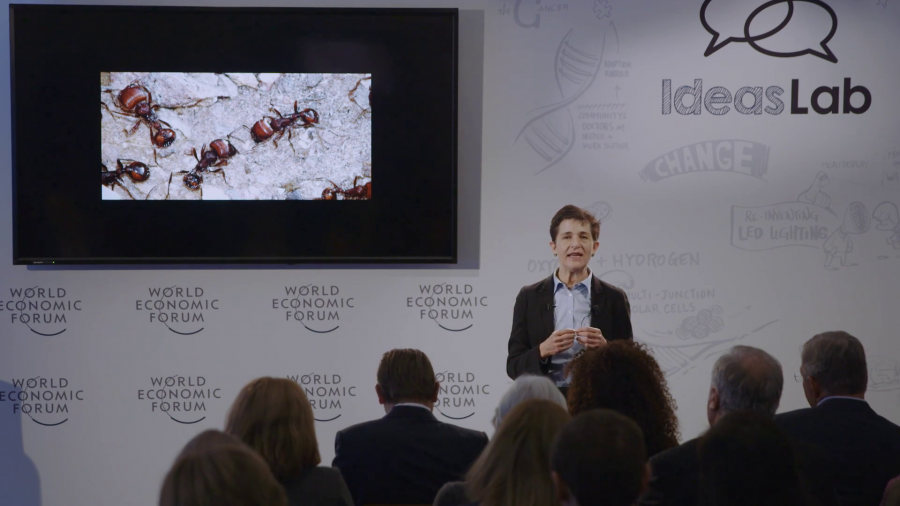Collective decisions are made without any central control, and there are many examples in nature shown.
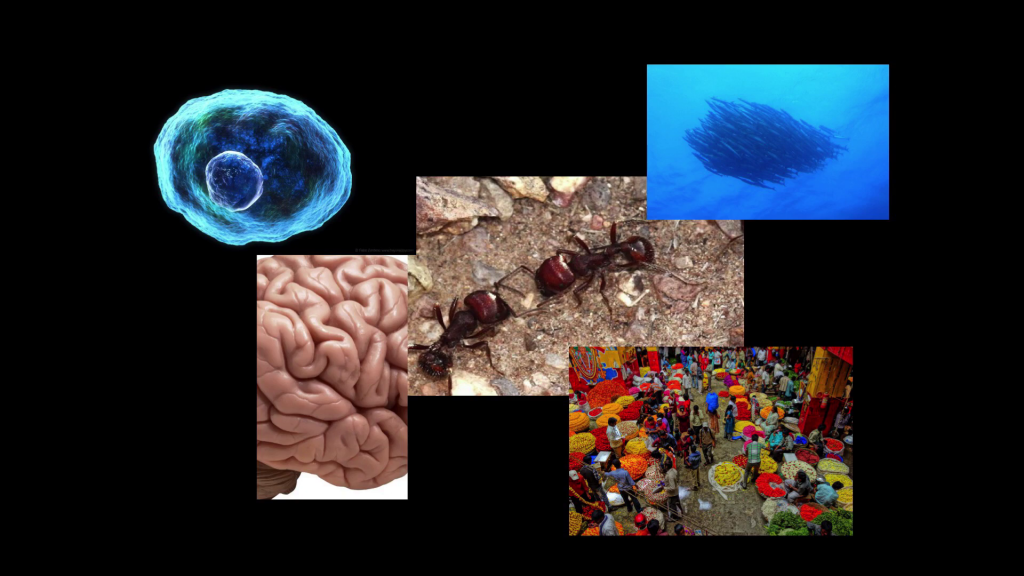
There’s a T cell, part of the immune system; the brain; human organizations like markets; and of course my favorite example is ants. And on all of these systems, the decision-making of the collective is based on local interactions.
So, the slide doesn’t show ants, but it does show neurons that are interacting, and cells that are interacting chemically and through tactile connections. And in ants, the main interactions that regulate the behavior of the collective or of the group are smell. So, most ants can’t see. They smell with their antennae, and when one ant touches another it can decide whether the other ant, based on its smell, is a nestmate. And the pattern of these interactions, just the rate at which ants meet each other, no other message, is what regulates and creates the behavior of the collective.
So, as an ant is walking around, for example in this lab arena, and it’s touching other ants with its antennae, smelling them, it’s just adding up those contacts to decide what to do. And in an analogous way, a neuron is also adding up its stimulation from other neurons to decide whether to fire.
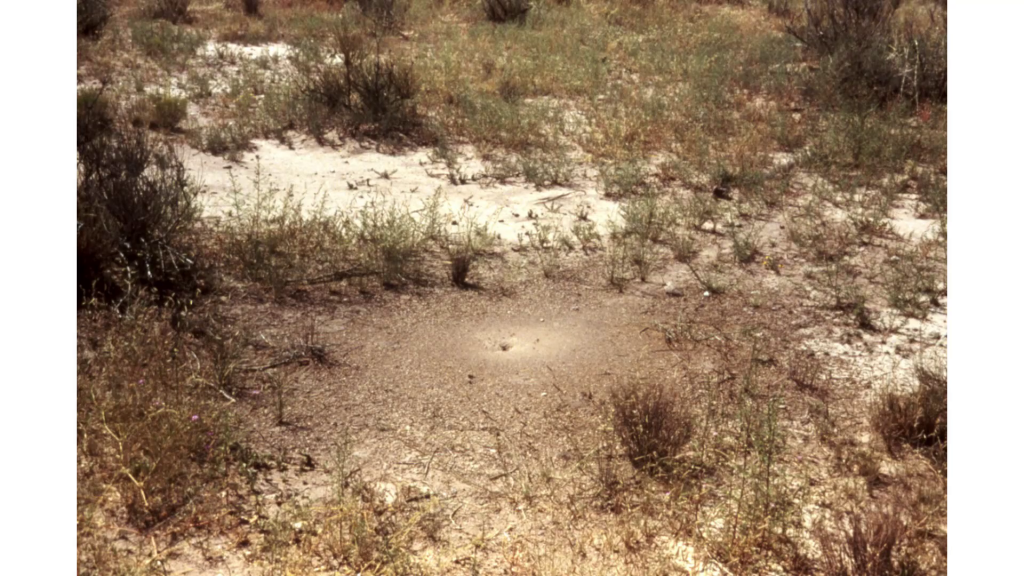
So, I’d like to tell you about one problem that ant colonies solved using these networks of simple local interactions. These are ants in the desert in the southwest US and in Mexico, and they forage for seeds. So, they leave the nest (that’s a nest shown there), they travel along, they search for seeds, and they bring them back and store them inside the nest.
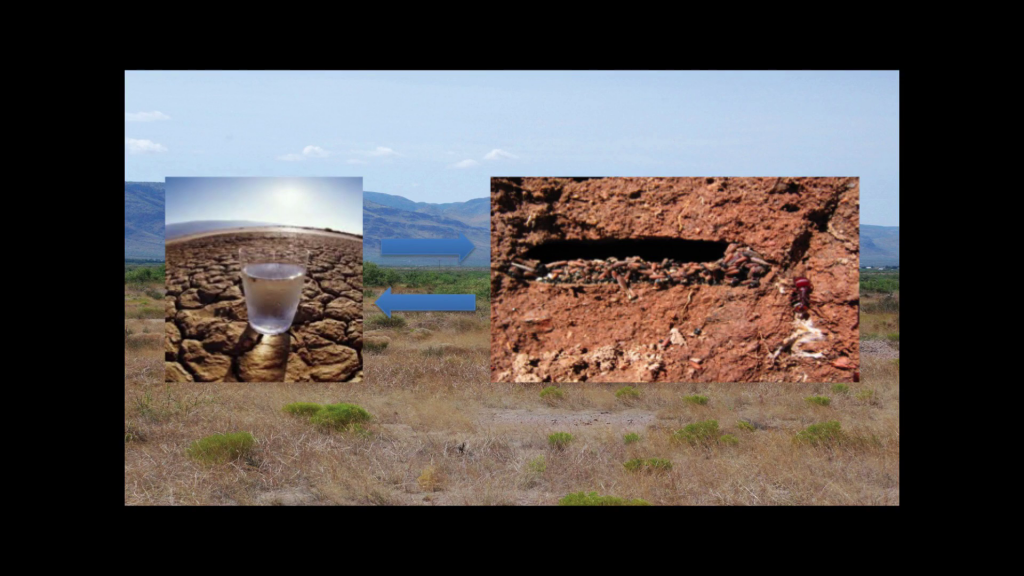
And the main problem that they have to solve is conserving water. It’s hot in the desert. An ant loses water just being outside foraging, and they get their water out of the seeds that they eat. Shown there is a seed chamber. So basically the colony has to spend water to get water, and it constantly has to manage this trade-off. Is it worth it right now to go out and look for food?
And the way that they use interactions to manage this trade-off is that an outgoing forager doesn’t leave the nest until it meets enough returning foragers with food. So what you see there is a film made inside the nest with a videoscope. And the returning forger comes in and then the outgoing foragers add up their contacts with returning forgers to decide whether to leave.
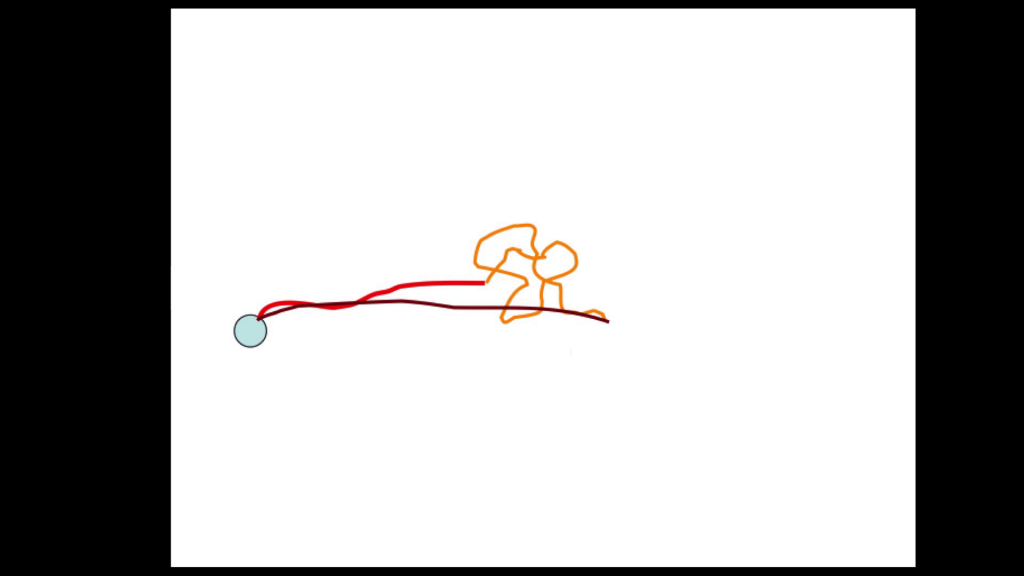
And this makes sense if you think about the foraging trip of an ant that leaves the nest, travels along the trail, then meanders around to search for food, and then turns around and brings it back to the nest. So, the more food there is out there, the faster they find food, the faster they come back, the more ants go out. So it’s simple positive feedback.
Shown there are ants now in a nest where the top has been excavated. The ants with seeds are returning forgers coming in with food, and inside are ants, outgoing foragers, that are meeting the returning forgers. The ants inside are meeting the returning forgers and deciding whether to leave. No ant knows how much food there is out there, but that’s what regulates the foraging.
Now, we find the colonies are different. Some colonies work like this where the ants are moving very fast no matter how hot it is. But other colonies move much more slowly, forage much less when it’s hot and dry. It’s really the difference in poor conditions that separates them. And because I’ve been tracking these colleagues for a long time, I’ve been able to see the signal of natural selection in this population. It turns out, surprisingly, that the colonies that conserve water, the ones that sacrifice getting as much food as possible and restrict foraging when it’s hot and dry, are the ones that are having more offspring.
So we like to ask what is different about the individuals in the colonies that are more restrained in their foraging behavior, and it seems that the individuals are less sensitive to interaction. So we find out about that by tracing the path of all the individuals in a video like the one I just showed you.
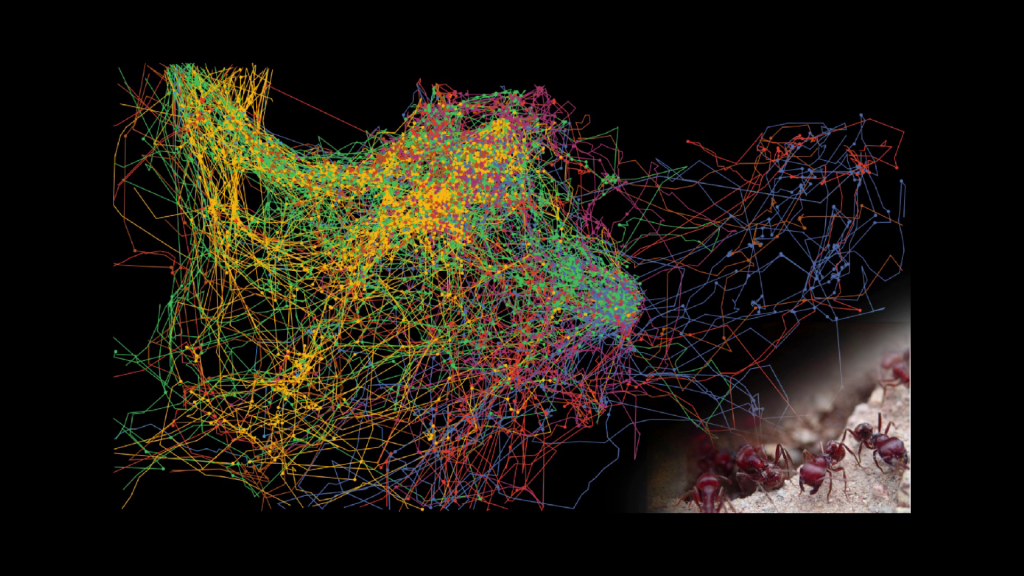
Each of those dots is an interaction, and we can see that what’s happening is that the individuals in colonies that forage less it seems have less dopamine in their brain. So they are less likely to respond to interactions, and the whole colony forages less.
So, these differences among colonies in the decisions of individuals lead to differences among colonies in the ecologically-important regulation of foraging. And so this analogy between how ants make decisions and how neurons make decisions is helping us understand the collective decision-making of the colony and how it is currently evolving.
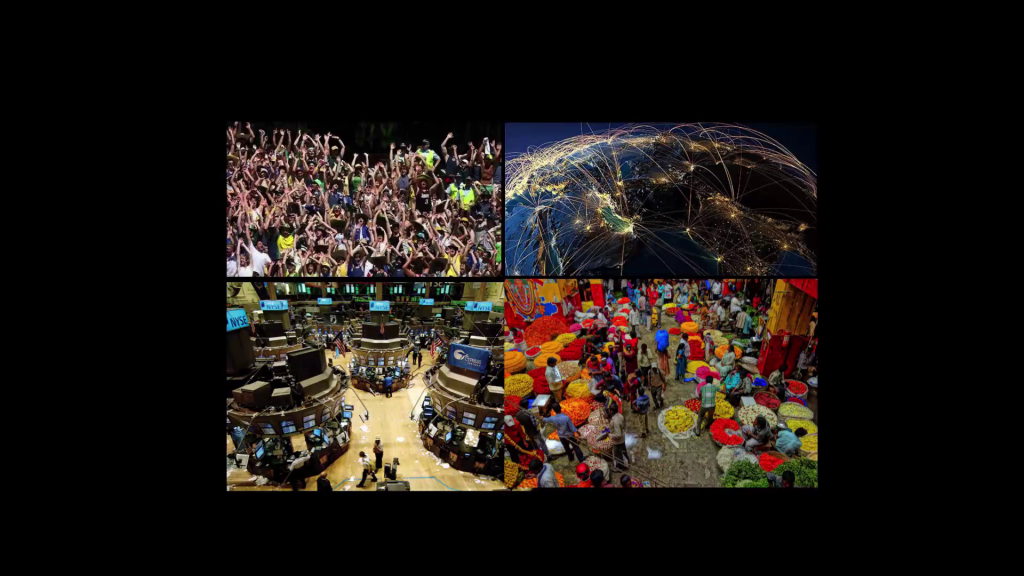
So, we see also collective decision-making in human organizations and human social behavior. For example, the way that a soccer game, the stock exchange, other markets, even the Internet. And so the question that I’d like to leave you with is, how can we extend what we are learning about how simple local interactions in ant colonies or in brains, in the aggregate, produce the collective behavior of the group and the way that it responds to changing conditions? How can we extend what we’re learning about collective behavior in other systems to begin thinking about collective behavior in human social organizations?
Thank you.
Further Reference
The Gordon Lab at Stanford University.
